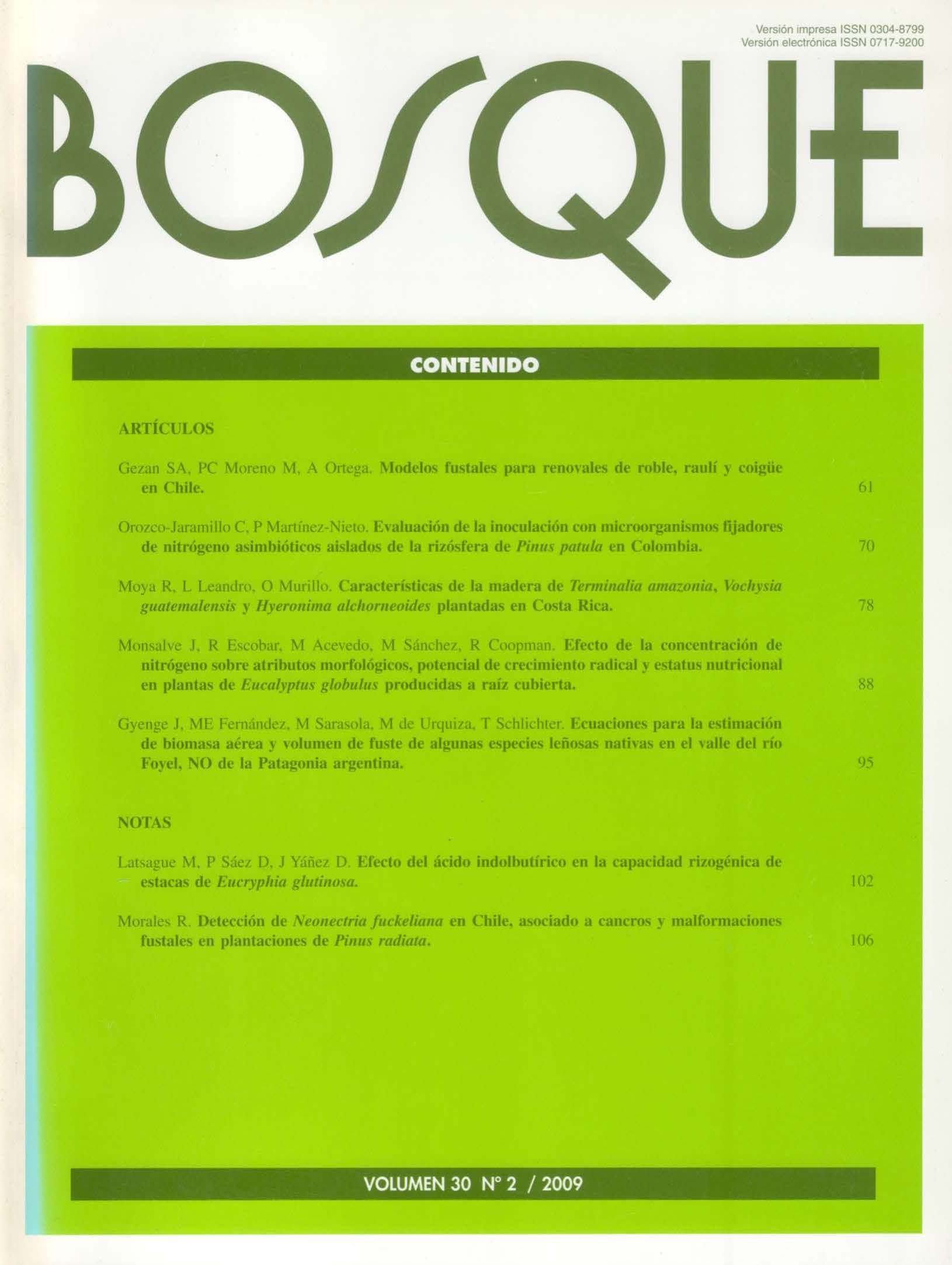Main Article Content
Aug 31, 2009
Abstract
The forests and shrublands dominated by ñire (Nothofagus antarctica) represent one of the ecosystems with the highest latitudinal distribution within the Patagonian forests. They constitute most of the ecotone between the Andean forests and the Patagonian steppe. Forests and shrublands of ñire can be monospecific or be codominated by several species forming mixed systems with ñire, radal (Lomatia hirsuta), laura (Schinus patagonicus), and retamo (Diostea juncea). The objective of this publication is to present equations to predict total aboveground biomass (T) and their components: leaves, thin and thick branches, and stem. These estimations were obtained from easily measurable variables such as basal diameter of branches, and the stem, at breast height (DAP) or at stem base (DB) for each species. Also, we present equations to estimate stem volume up to 5 cm of diameter, DAP from DB and height from DAP. Between 6.5 to 14 cm of DAP, very few differences in T were observed among T of the four species. However, both ñire and radal showed trees with higher DAP and also, higher values of T compared to trees of laura and retamo.


